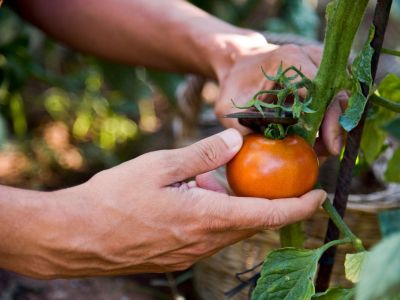July in the Northeast
By June, pretty much everything that needs to be planted has been and spring bloomers have been pruned back, so it might seem like a good idea to hang up the garden gloves, sip some ice tea and watch the garden unfurl. Not so. There are still lots of July garden tasks to be accomplished. Weeding, of course, is never-ending, but to minimize having to hand-pull weeds if you haven’t already done so now is the time to mulch. Add a thick 2- to 3-inch (5-7.5 cm.) layer of mulch around your plants. No need to weed first – just lay the layer over top of the weeds. The thick mulch will smother them. Yet, another bonus to mulching is keeping plant roots cool and retaining moisture.
Northeast Gardening To-Do List
Now that the mulching has been accomplished, it’s time to tackle other July garden tasks.
If you haven’t done so already, now is the time to check on automatic irrigation systems. If you don’t have a sprinkler system, consider installing timers. Also, capture that rare rainstorm by purchasing a rain barrel. On the subject of irrigation, use a soaker hose to slowly and deeply water trees every other week if there is little to no rain.
Another task on the Northeast gardening to-do list is to prune back climbing roses after the blooms have faded. Pinch your mums back every 10 days or so until the middle of the month. Also, bearded iris should be divided in July in the Northeast.
Keep flowers blooming by deadheading and fertilizing. Plant gladiolus up until the middle of July. Divide Madonna lilies as soon as they are done blooming. Oriental poppies can only be moved in the summer and July in the Northeast is a good time to do it. Dig up the roots and cut into 2-inch (5 cm) pieces and replant.
Cut back delphinium when done blooming and give them a dose of complete fertilizer to induce a second bloom. Prune wisteria and deadhead daylilies.
If yews and hedges need pruning, now is the time to tackle them. After mid-July, abstain from using electric shears and only judiciously prune with hand clippers.
Fertilize zoysia lawns but wait to fertilize other types of turf until Labor Day.
Keep tomatoes regularly moist so the plants don’t get blossom end rot and keep an eye out for hornworms.
Use your herbs! Some herbs get hard and woody if not cut frequently or bloom, which affects the flavor of the herb.
Thin fruit from trees to foster larger, healthier produce.
Side dress veggies with a nitrogen rich fertilizer. Harvest mature vegetables. Believe it or not, one July task is to sow veggies for a fall crop. Sow seeds for broccoli, cabbage, cauliflower, lettuces, peas, radish, kale, and spinach.
Keep the compost pile turned and moist and continue to add to it.
Save your berries! Fertilize and cover blueberries with netting to protect them from birds. Trim runner growth from strawberries so more energy will go into producing berries. Remove the fruiting canes from raspberries after harvest.
And you thought July in the Northeast was going to be a time of relaxation!
